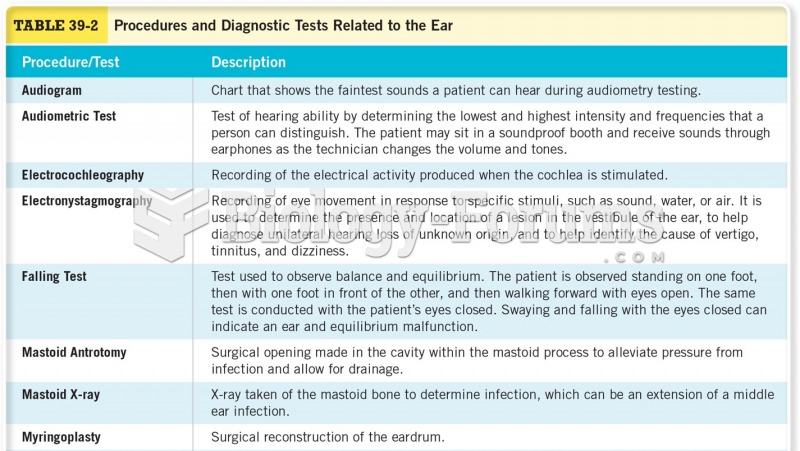|
|
|
Lower drug doses for elderly patients should be used first, with titrations of the dose as tolerated to prevent unwanted drug-related pharmacodynamic effects.
In 1864, the first barbiturate (barbituric acid) was synthesized.
More than 30% of American adults, and about 12% of children utilize health care approaches that were developed outside of conventional medicine.
The top 10 most important tips that will help you grow old gracefully include (1) quit smoking, (2) keep your weight down, (3) take supplements, (4) skip a meal each day or fast 1 day per week, (5) get a pet, (6) get medical help for chronic pain, (7) walk regularly, (8) reduce arguments, (9) put live plants in your living space, and (10) do some weight training.
Urine turns bright yellow if larger than normal amounts of certain substances are consumed; one of these substances is asparagus.







